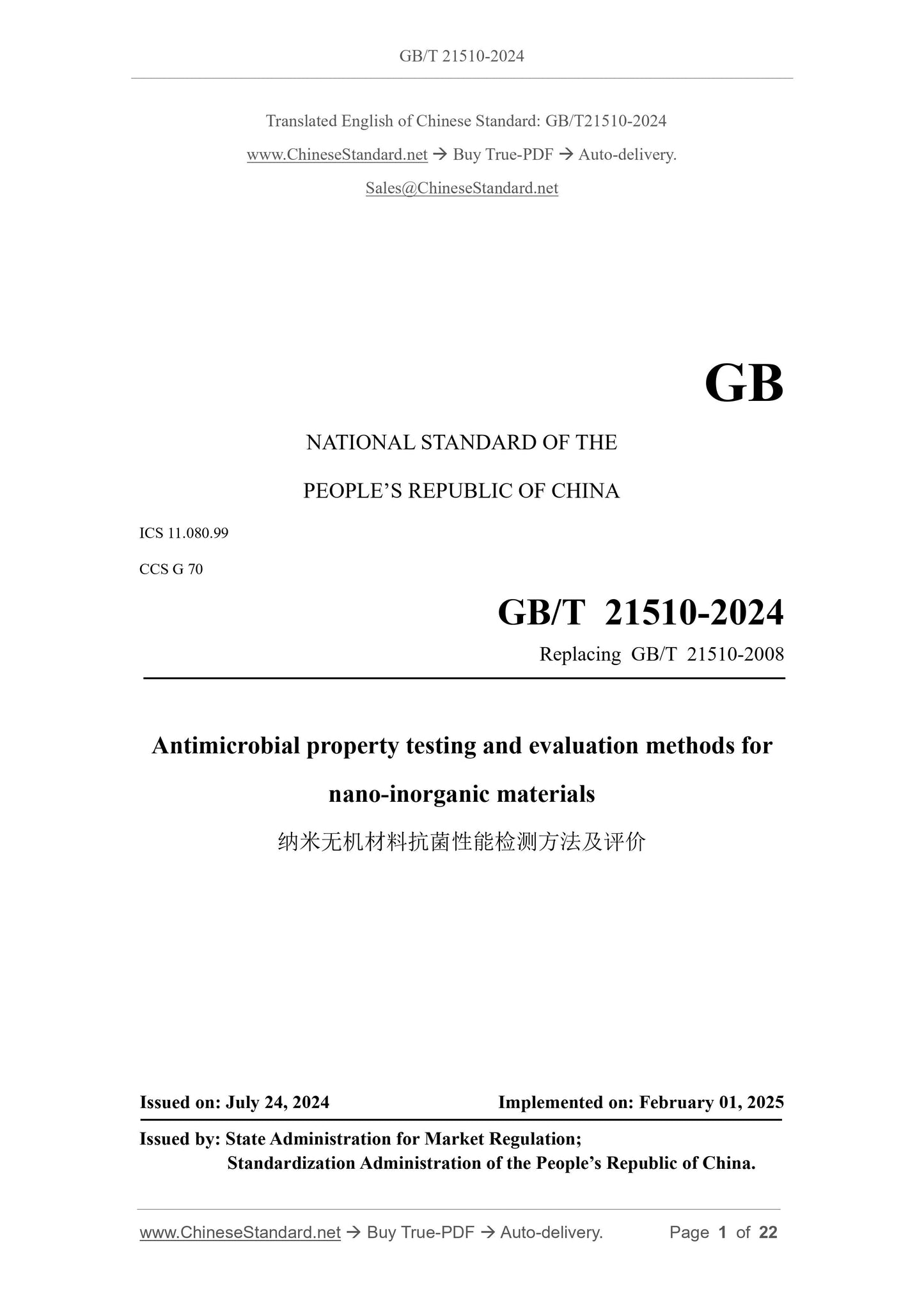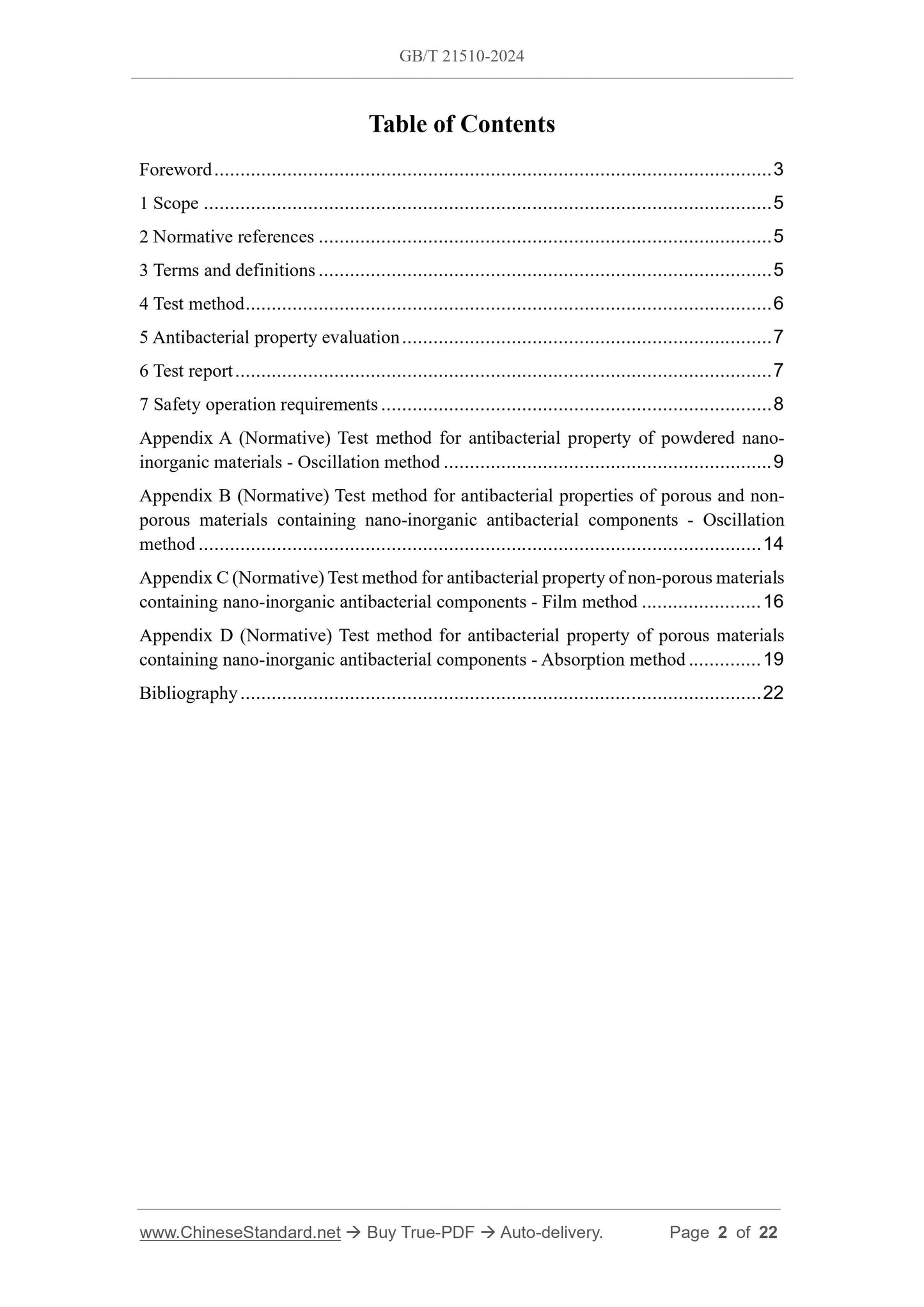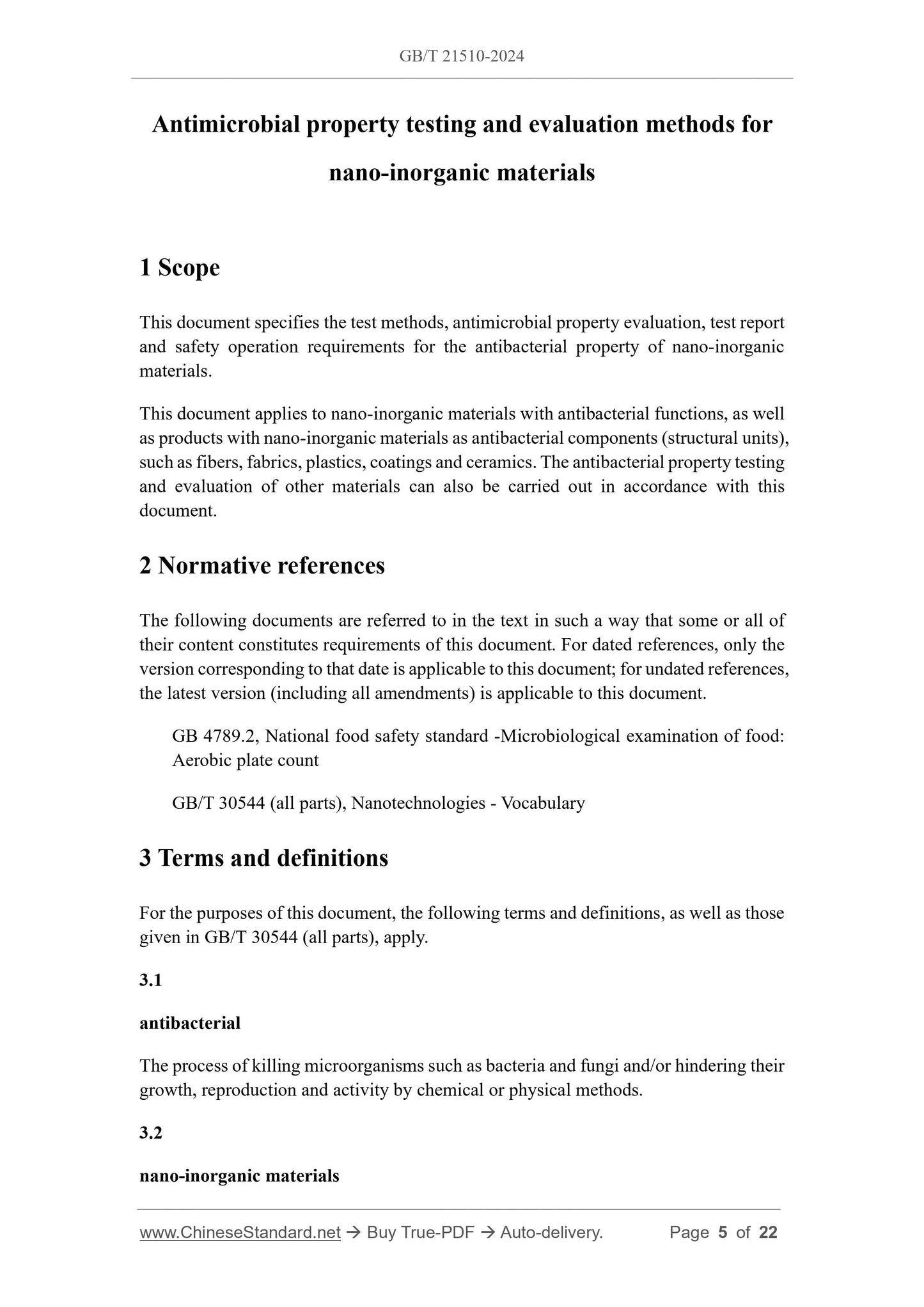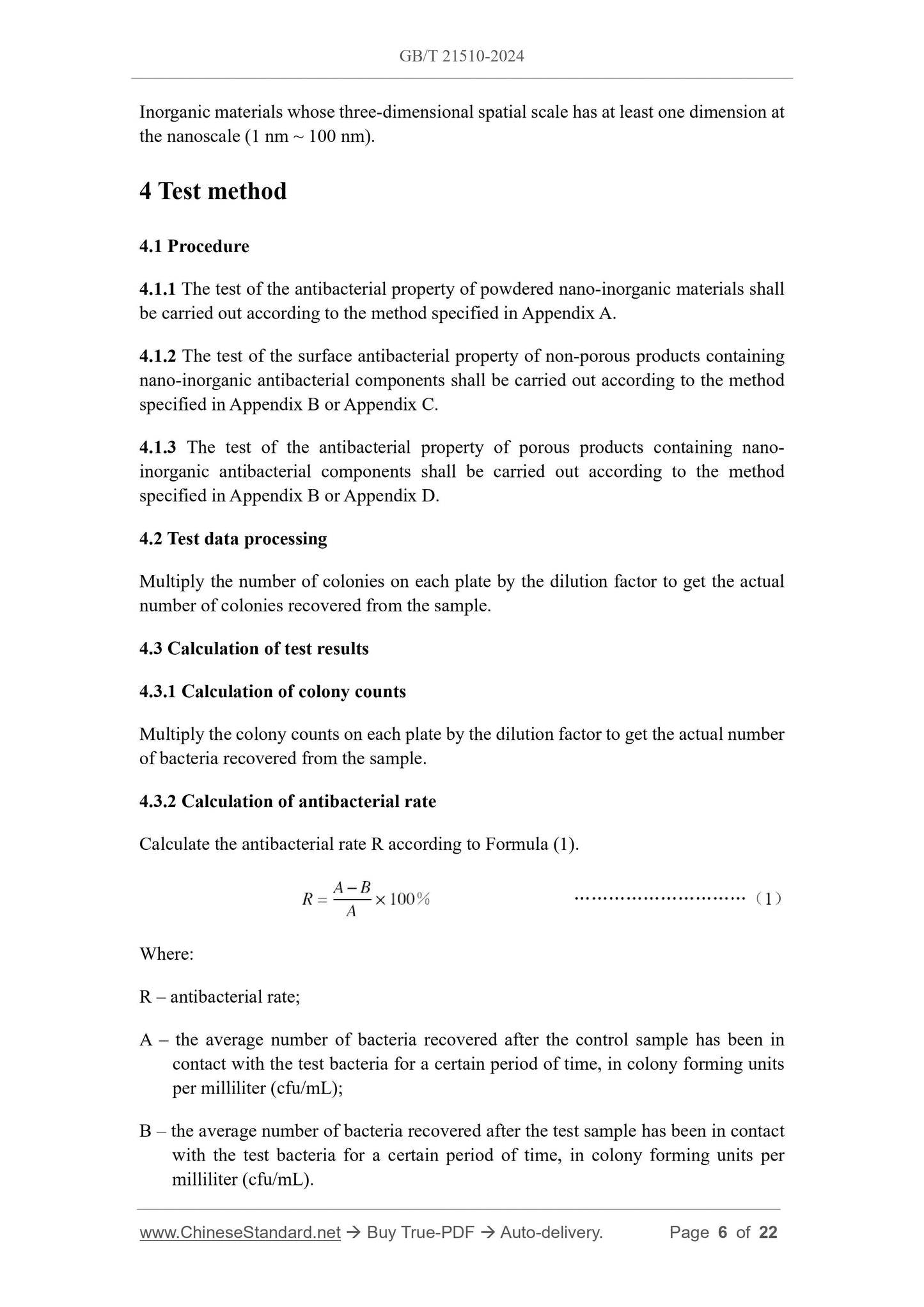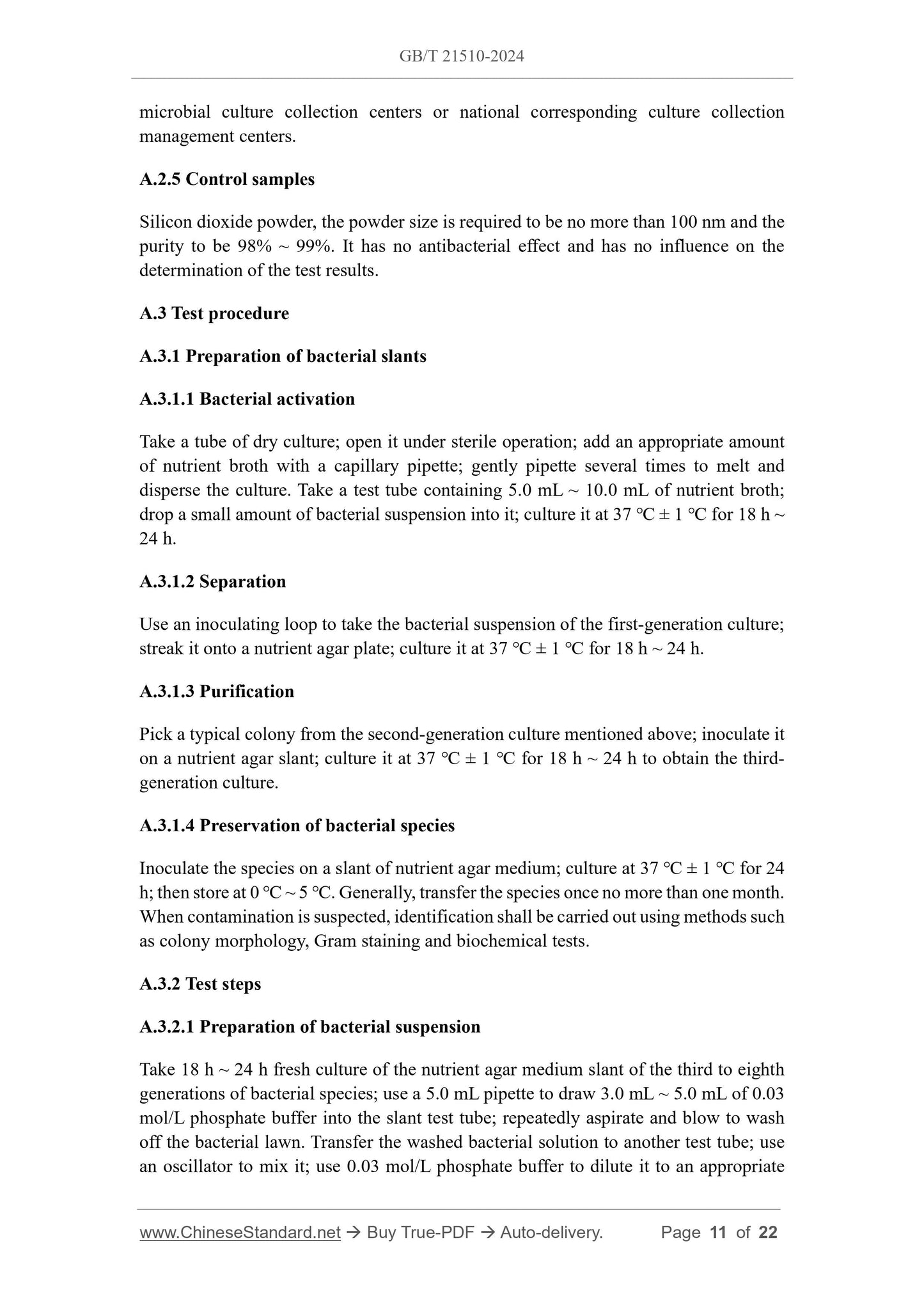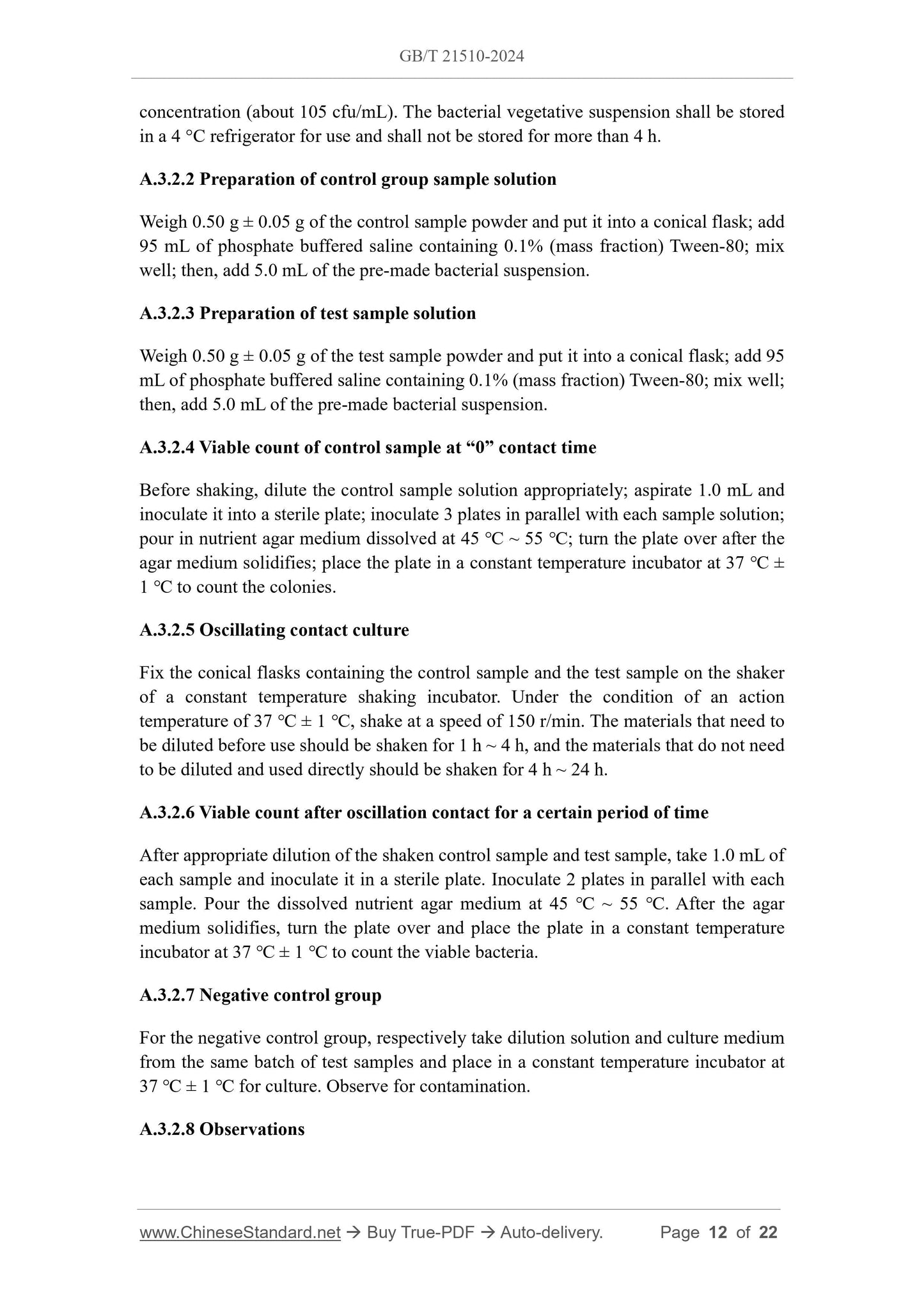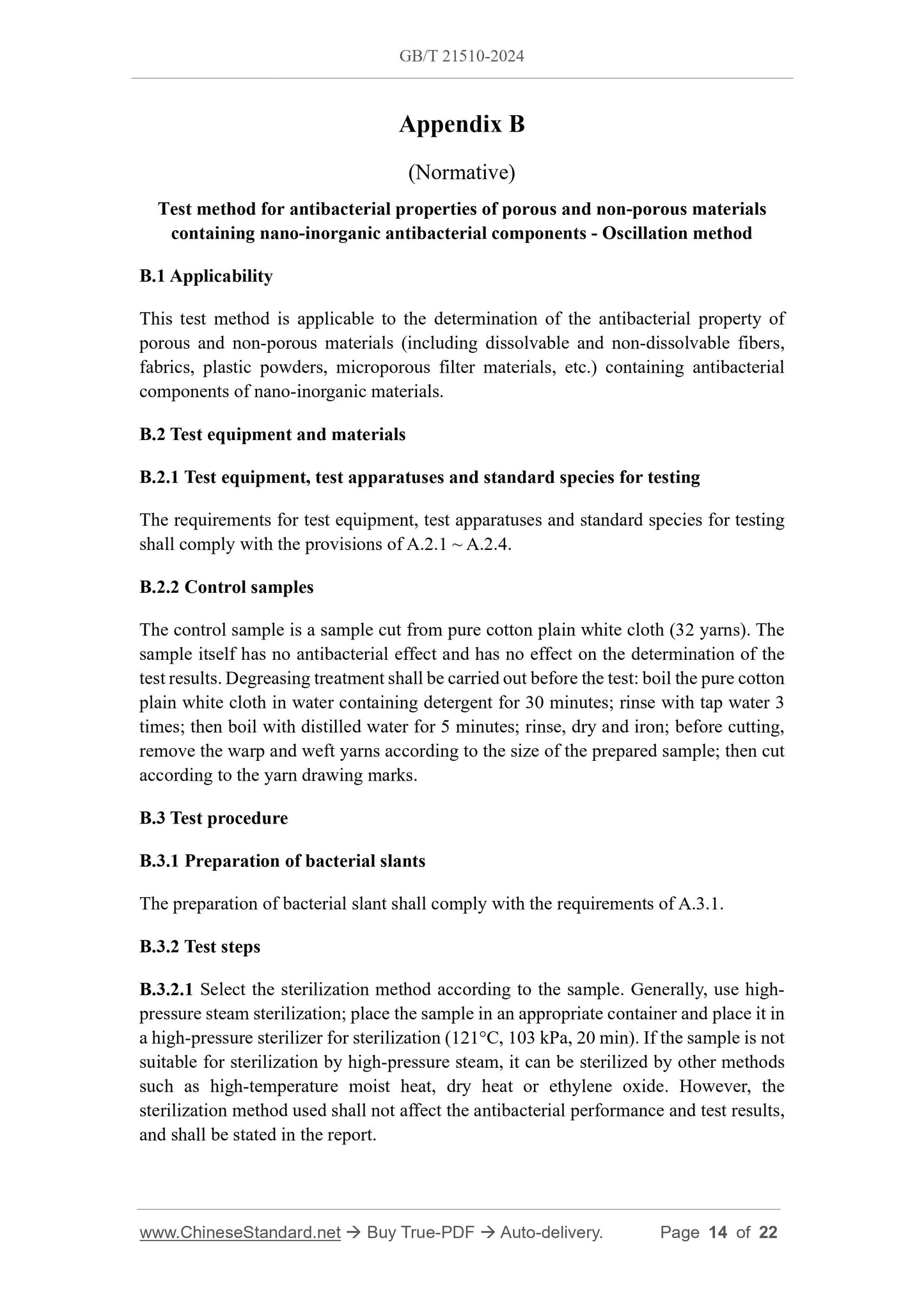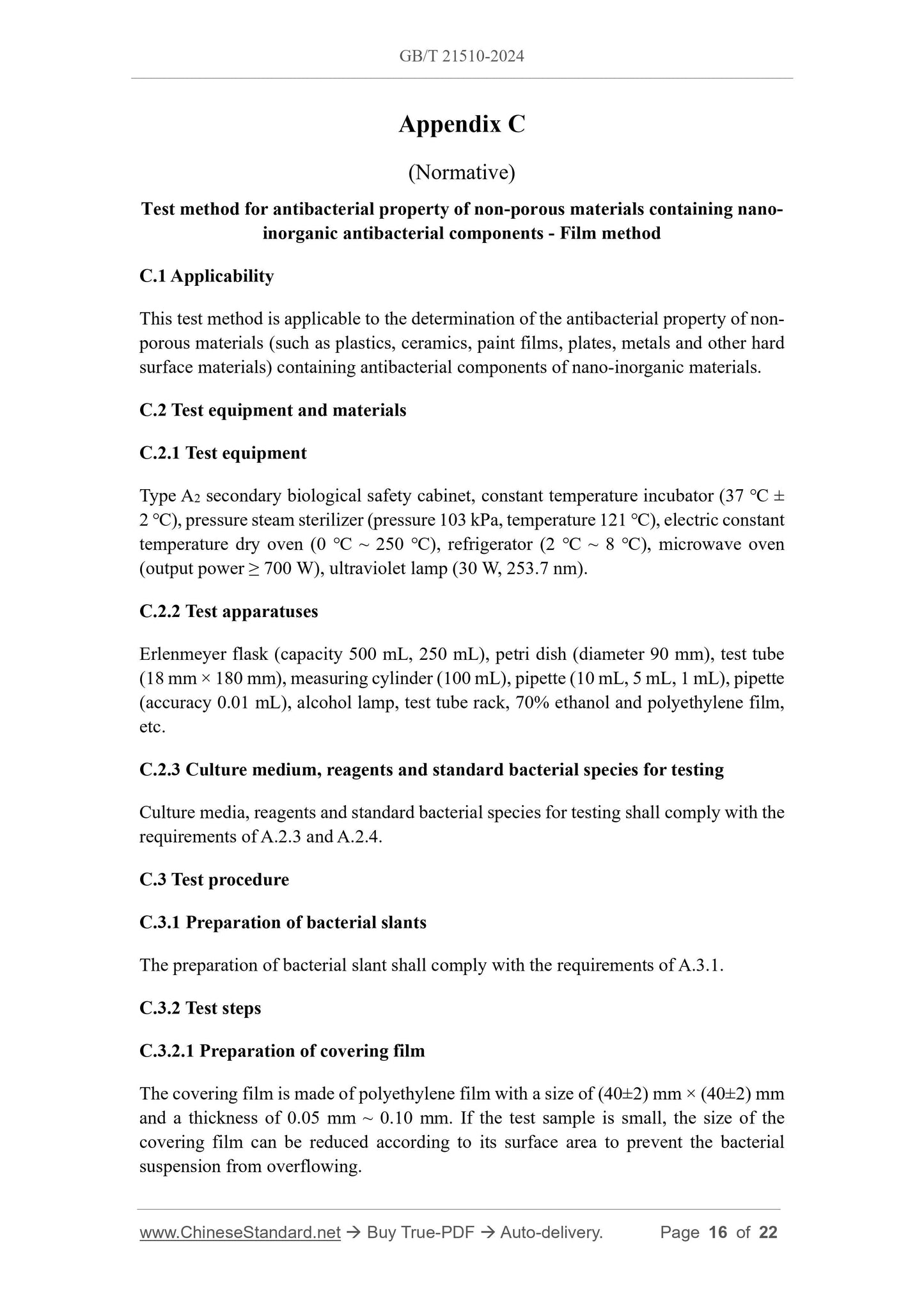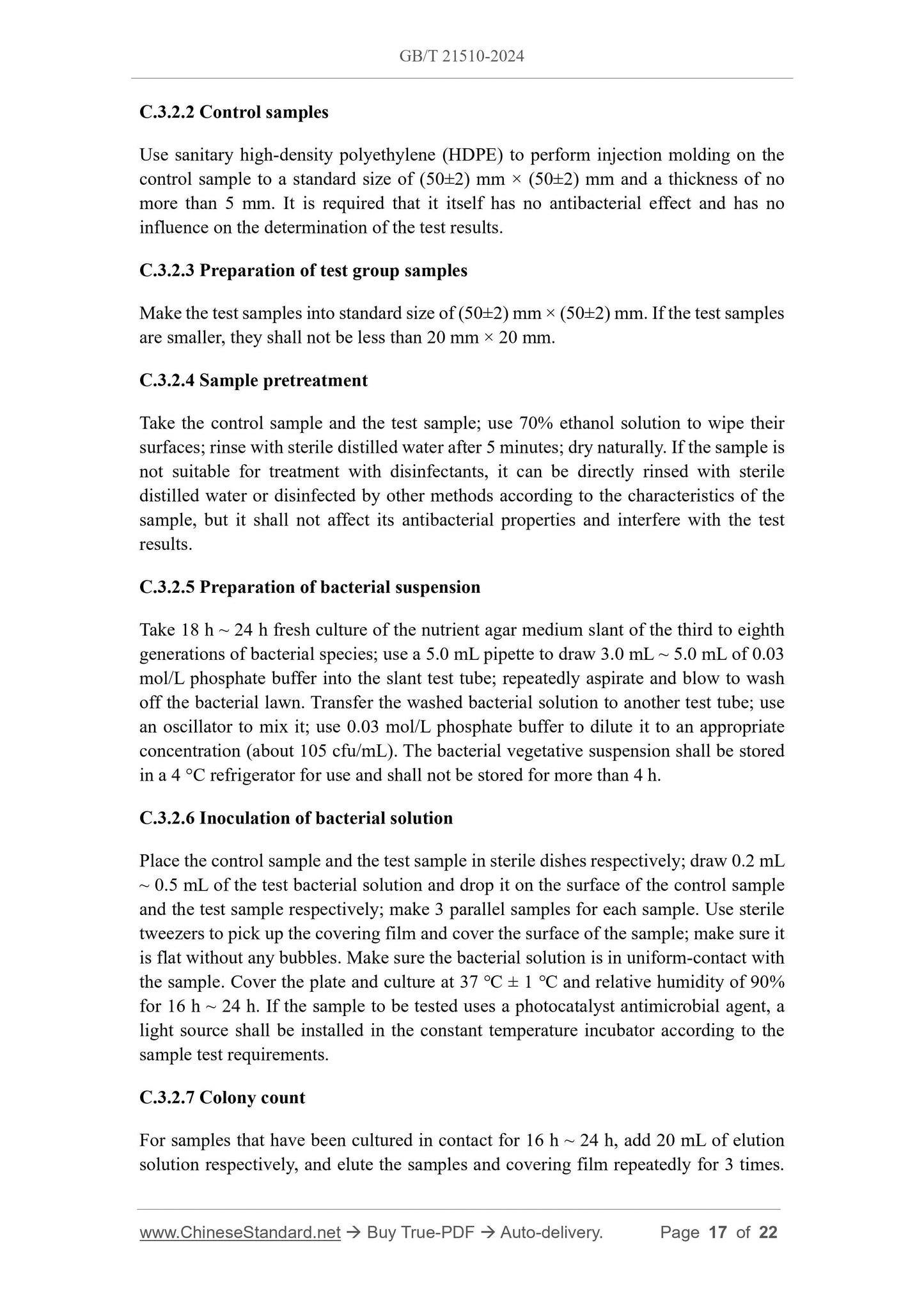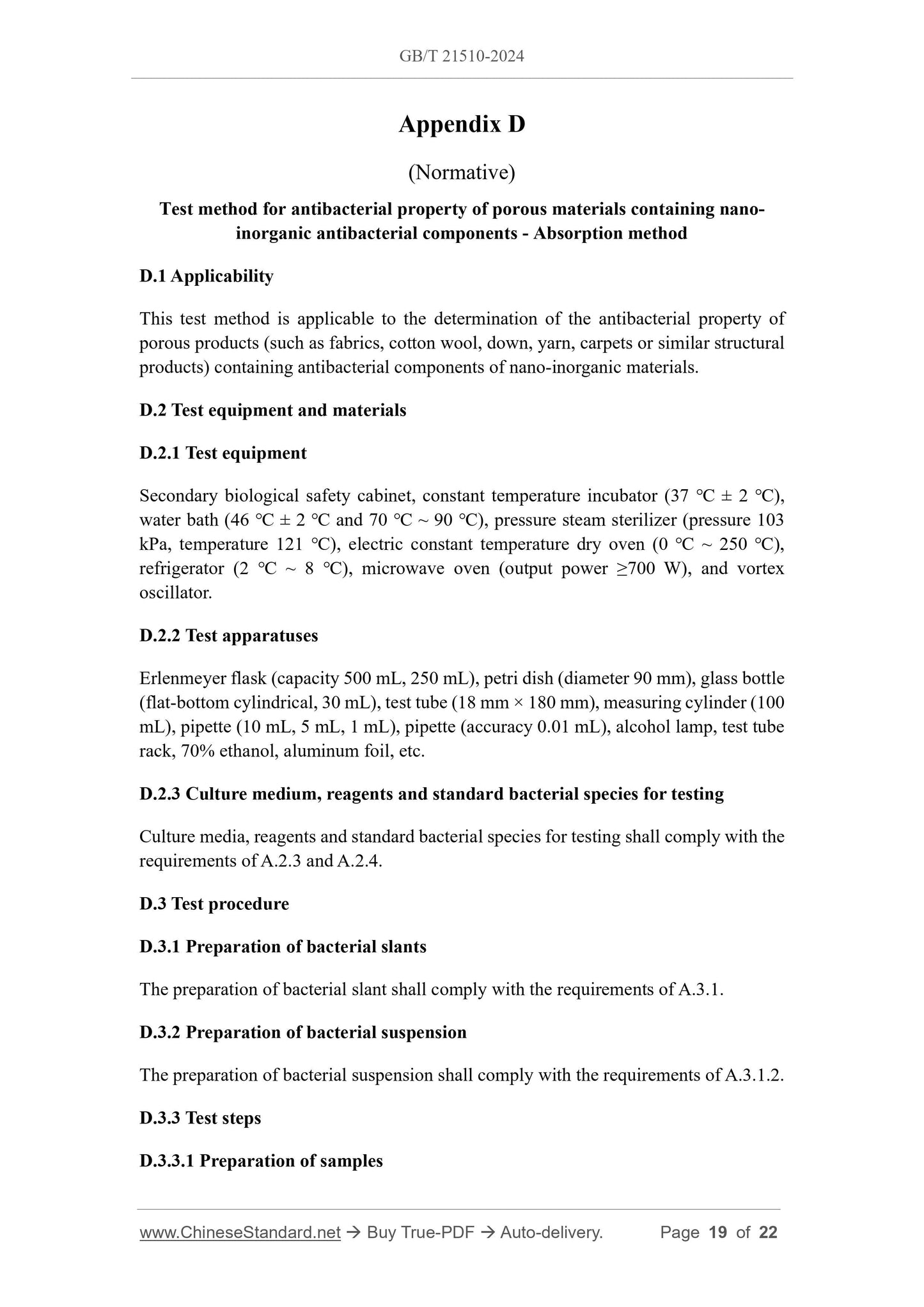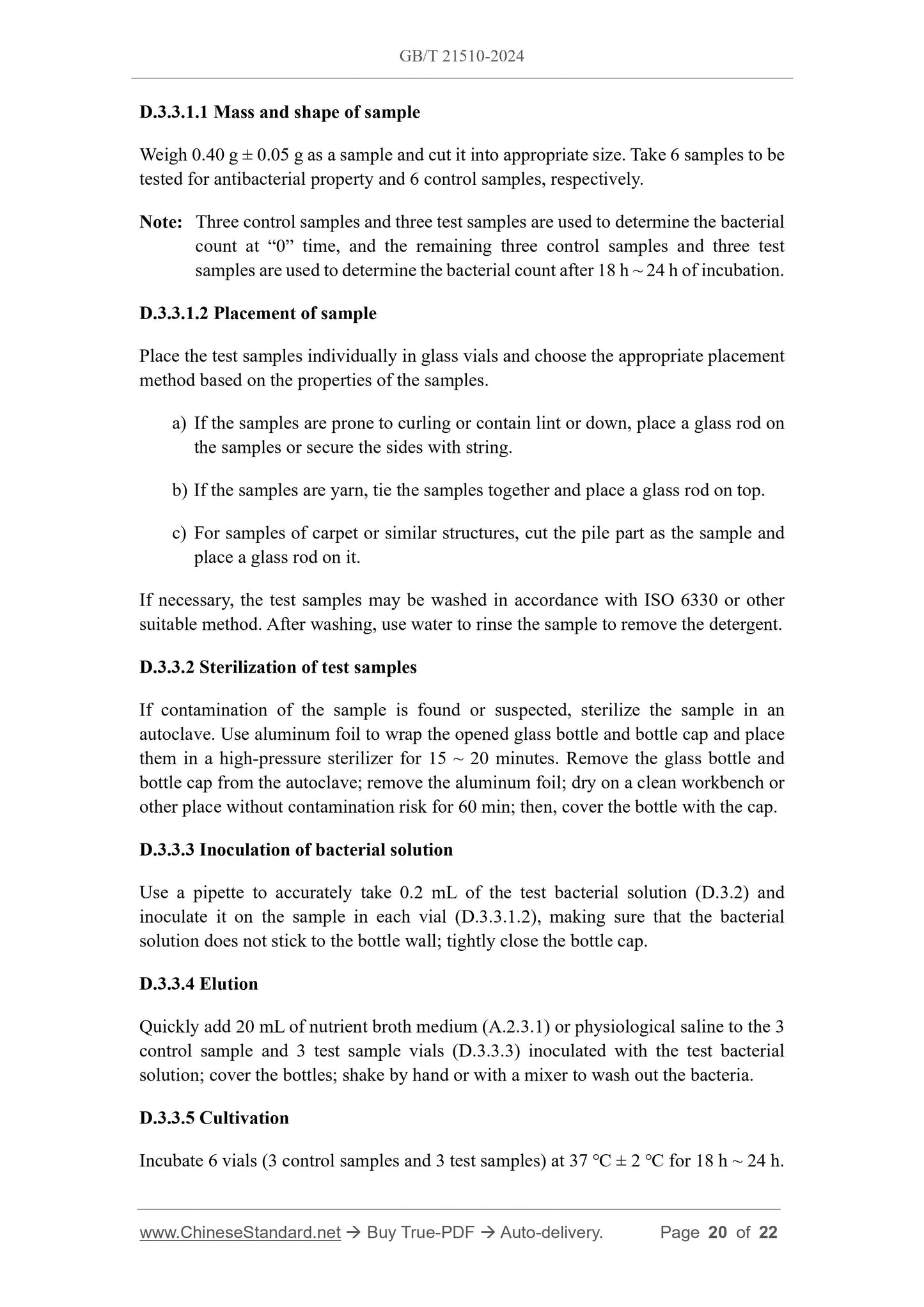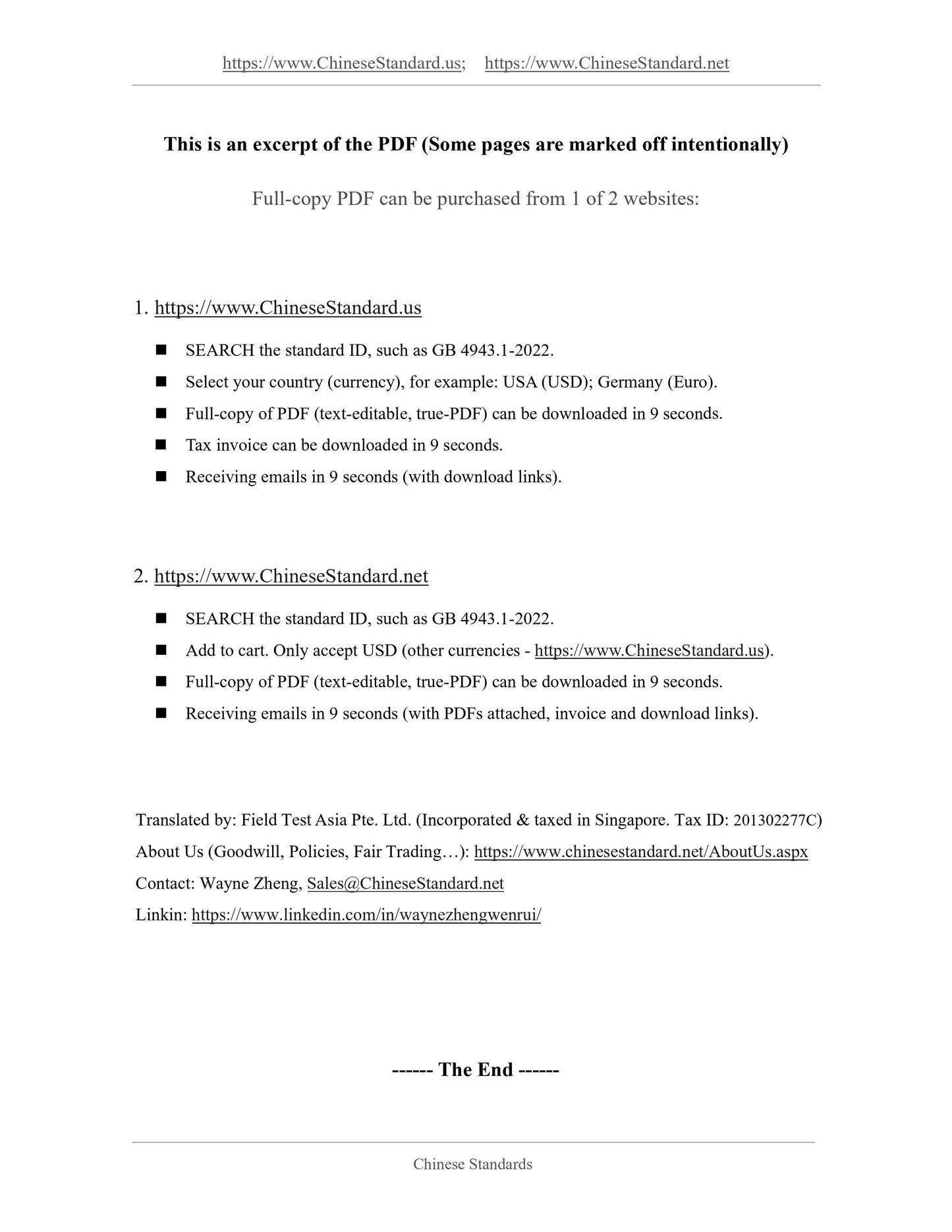1
/
of
12
www.ChineseStandard.us -- Field Test Asia Pte. Ltd.
GB/T 21510-2024 English PDF (GB/T21510-2024)
GB/T 21510-2024 English PDF (GB/T21510-2024)
Regular price
$275.00
Regular price
Sale price
$275.00
Unit price
/
per
Shipping calculated at checkout.
Couldn't load pickup availability
GB/T 21510-2024: Antimicrobial property testing and evaluation methods for nano-inorganic materials
Delivery: 9 seconds. Download (and Email) true-PDF + Invoice.Get Quotation: Click GB/T 21510-2024 (Self-service in 1-minute)
Newer / historical versions: GB/T 21510-2024
Preview True-PDF
Scope
This document specifies the test methods, antimicrobial property evaluation, test reportand safety operation requirements for the antibacterial property of nano-inorganic
materials.
This document applies to nano-inorganic materials with antibacterial functions, as well
as products with nano-inorganic materials as antibacterial components (structural units),
such as fibers, fabrics, plastics, coatings and ceramics. The antibacterial property testing
and evaluation of other materials can also be carried out in accordance with this
document.
Basic Data
| Standard ID | GB/T 21510-2024 (GB/T21510-2024) |
| Description (Translated English) | Antimicrobial property testing and evaluation methods for nano-inorganic materials |
| Sector / Industry | National Standard (Recommended) |
| Classification of Chinese Standard | G70 |
| Classification of International Standard | 11.080.99 |
| Word Count Estimation | 16,181 |
| Date of Issue | 2024-07-24 |
| Date of Implementation | 2025-02-01 |
| Older Standard (superseded by this standard) | GB/T 21510-2008 |
| Issuing agency(ies) | State Administration for Market Regulation, China National Standardization Administration |
Share
